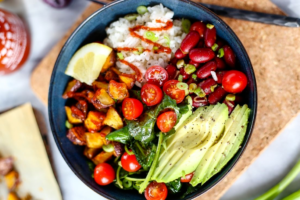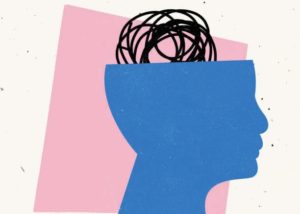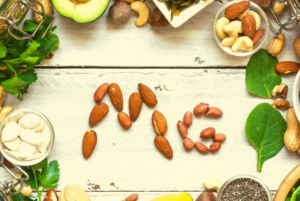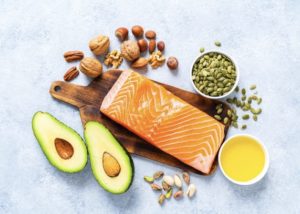- Home
- /
- Lifestyle
- /
- The Science of Habits...
- /
- The Science of Healthy...
Habits are the building blocks of our daily lives, shaping our actions, behaviors, and ultimately, our destinies. From the mundane routines like brushing teeth to the more significant actions like exercising regularly or staying focused on a goal, healthy habits formation plays a crucial role in our success and well-being. In this comprehensive article, we will delve into the fascinating world of habit formation, exploring the underlying science, and uncovering the strategies to create lasting habits.
What are habits?
1. Invisible threads
Habits are the invisible threads that weave the fabric of our daily existence. They are the automatic responses and routines that dictate how we navigate through life. Whether it’s the simple act of sipping coffee in the morning or the more complex process of problem-solving at work, habits govern a significant portion of our actions. What makes habits so intriguing is their ability to function on autopilot, bypassing conscious decision-making and becoming ingrained in our subconscious minds. These deeply rooted behaviors are often the result of repeated actions, solidifying neural pathways in the brain and establishing patterns that persist over time.
2. Habits malleability
While some habits are consciously developed to promote positive outcomes, others may be formed unintentionally or as coping mechanisms. The brain’s incredible adaptability allows it to adjust to environmental stimuli and reinforce actions that are associated with rewards or perceived benefits. This creates a reinforcing loop, where cues trigger specific behaviors, leading to rewards that further strengthen the habit’s hold on our daily lives. The fascinating aspect of habits lies in their malleability. Through conscious effort, we have the power to break free from detrimental habits and cultivate new, more beneficial ones. By understanding the mechanics of habit formation, we can harness this potential for self-improvement and personal growth.
3. Collective influence
Habits extend beyond the individual level, shaping the dynamics of communities, societies, and cultures. Shared practices, rituals, and traditions become ingrained habits passed down through generations. The collective habits of a society can impact its overall health, productivity, and success. For instance, a culture that values punctuality and diligence may have a more efficient and productive workforce. On the other hand, a society entrenched in unhealthy habits could face long-term consequences on public health. Recognizing the broader implications of habits on a societal scale can foster a greater sense of responsibility and motivate efforts to promote positive change for the collective well-being.
4. Conscious and unconscious
The process of habit formation involves a delicate interplay between the conscious and subconscious mind. While habits become automatic over time, their initial establishment often requires conscious effort and repetition. By deliberately choosing new behaviors and consistently reinforcing them, we create neural connections that eventually become hardwired into our brains. However, not all habits are created equal. Some may be fleeting, while others may endure for a lifetime. The duration and strength of a habit can vary depending on various factors, such as the level of motivation, the presence of triggers, and the intensity of the associated rewards.
5. Empowering and limiting power of habits
Habits can be both empowering and limiting. Positive habits, such as regular exercise, healthy eating, and continuous learning, can propel us towards our goals and lead to a fulfilling life. Conversely, negative habits, like smoking, excessive screen time, or procrastination, can hinder progress and negatively impact our physical and mental well-being. Recognizing the power of habits and their influence on our lives is the first step towards transformation. By cultivating self-awareness and understanding the mechanics of habit formation, we can take charge of our behaviors and consciously shape the life we desire.
6. Habits as a way to freedom
The journey of habit formation is not without challenges. Breaking free from long-established habits can be daunting, and creating new ones requires dedication and perseverance. It is crucial to approach habit change with compassion and patience, understanding that setbacks are a natural part of the process. Celebrating small victories and maintaining a growth mindset can provide the resilience needed to overcome obstacles and stay committed to positive change. As we embark on the path of habit transformation, we embark on a journey of self-discovery and self-improvement, unlocking the full potential of our minds and bodies.
The habit loop: cue, routine, reward for healthy habits formation
The habit loop, consisting of cue, routine, and reward, is a fundamental psychological framework that governs how habits form and persist. Understanding this loop is essential in unraveling the complexities of habit formation and provides valuable insights into how we can effectively create, modify, or break habits.
The trigger
At the core of the habit loop is the cue, a trigger that initiates the habit. Cues can be external, such as a specific time of day, a particular location, or the presence of other people. They can also be internal, like an emotion, a thought, or a physical sensation. Cues serve as the starting point for the habit, signaling the brain to shift into automatic mode and prompting the associated routine.
Routine
The routine is the actual behavior or action that follows the cue. It represents the habitual response to the trigger. Whether it’s biting nails in times of stress or reaching for a smartphone upon hearing a notification sound, the routine is the ingrained behavior that follows the cue without conscious thought. Repetition is the key to solidifying the routine, as the more the behavior is performed in response to the cue, the stronger the habit becomes.
Reward
Rewards are the critical element that reinforces the habit loop and cements the habit’s repetition. When the routine is executed in response to the cue, it leads to the reward, which can be tangible or psychological. Rewards trigger the release of dopamine, a neurotransmitter associated with pleasure and motivation, creating a positive association between the cue, routine, and reward. This dopamine release strengthens the neural pathways associated with the habit, making it more likely for the behavior to be repeated in the future.
The loop
The cycle of cue, routine, and reward is a self-reinforcing loop that perpetuates the habit. As the loop becomes more ingrained, the habit transforms into an automatic response, requiring minimal conscious effort to execute. Over time, the habit becomes second nature, and the brain conserves energy by relying on these automatic behaviors, freeing up mental resources for other tasks.
While the habit loop is instrumental in developing positive habits, it can also be responsible for maintaining detrimental ones. Addictive behaviors, for instance, are often driven by the powerful rewards associated with the routine, reinforcing the habit loop in ways that can be challenging to break. Understanding the habit loop’s mechanics can shed light on the complexities of addiction and offer valuable insights into addiction recovery strategies.
Changing of all three components
Creating new habits involves deliberately crafting cues, routines, and rewards to establish desired behaviors. By selecting clear and consistent cues, designing simple and achievable routines, and attaching meaningful rewards, individuals can set themselves up for success in building positive habits. It is essential to start small and celebrate progress along the way, as habits take time and repetition to solidify.
In summary, the habit loop of cue, routine, and reward serves as the foundation of our daily routines and behaviors. Understanding this loop empowers us to take control of our habits, enabling us to cultivate positive ones and break free from detrimental patterns. By harnessing the power of cues and rewards, we can navigate the intricate pathways of our minds and shape the life we aspire to lead.
What does science think behind healthy habits formation
The science behind habit formation delves into the intricate workings of the human brain and the neurobiological processes that underpin the establishment and reinforcement of habits. At the core of this science lies the concept of neuroplasticity—the brain’s remarkable ability to adapt and reorganize itself in response to experiences and behaviors.
Role of neuroplasticity
Neuroplasticity plays a significant role in habit formation by reshaping neural connections in the brain. When a new behavior is repeated consistently, the brain creates and strengthens synaptic pathways, making it easier for the associated action to occur automatically in the future. These reinforced pathways become more efficient, and the behavior becomes increasingly habitual.
About Mind Diet read here: The MIND Diet: Nourishing Your Brain for Optimal Health
The basal ganglia is to blame for everything
One critical brain region involved in habit formation is the basal ganglia. This complex structure is responsible for motor control, skill learning, and habitual behavior. As habits become more ingrained, the basal ganglia takes over the control of these automatic actions, freeing up the prefrontal cortex—the region responsible for conscious decision-making—to focus on other cognitive tasks.
The habit loop, consisting of cue, routine, and reward, is the driving force behind the science of habit formation. When the brain identifies a cue that triggers a specific behavior and associates it with a rewarding experience, it creates a neurological shortcut that allows the routine to be executed more efficiently.
What does dopamine have to do with it?
Dopamine, a neurotransmitter associated with pleasure and reward, plays a crucial role in the science of habit formation. When we experience a reward after performing a routine in response to a cue, the brain releases dopamine, reinforcing the neural pathways associated with the habit. This process strengthens the habit loop, making the behavior more automatic and compelling.
Not all habits are created equal, and their formation can vary based on factors such as motivation, repetition, and emotional significance. Intense emotions can imprint habits more deeply into the brain, which is why emotional triggers can be especially powerful in establishing and reinforcing habits.
Interestingly, research suggests that the brain does not distinguish between good and bad habits in terms of formation. Both positive and negative habits follow the same neurobiological principles, emphasizing the importance of consciously shaping habits to ensure they align with our goals and values.
Smart goals as a way to good habits
To create lasting habits, individuals can leverage the science of habit formation by employing strategies such as habit stacking, where new behaviors are linked to existing ones, and setting SMART goals—Specific, Measurable, Achievable, Relevant, and Time-bound. Engaging in deliberate practice and consistent repetition helps to strengthen neural pathways and establish habits more effectively.
Understanding the science behind habit formation empowers us to take control of our behaviors and make intentional changes in our lives. By tapping into the brain’s neuroplasticity and leveraging the habit loop’s mechanics, we can shape our actions, behaviors, and ultimately our destinies for the better.
Psychology of healthy habits formation
The psychology of habit formation delves into the cognitive and behavioral aspects that influence how habits are created, maintained, and modified. Understanding these psychological principles is vital for individuals seeking to harness the power of habits to achieve personal growth and self-improvement.
One key psychological concept in habit formation is habit stacking. This technique involves linking a new habit with an existing one to create a sequence of behaviors. By capitalizing on the brain’s tendency to follow established routines, habit stacking makes it easier to integrate new habits into our daily lives. For example, if someone wants to start meditating regularly, they can associate it with their existing habit of drinking morning coffee, turning the coffee ritual into a cue for meditation.
External and internal triggers
Triggers, both external and internal, play a crucial role in the psychology of habit formation. External triggers, such as visual cues or environmental stimuli, prompt certain behaviors without conscious effort. For instance, seeing a gym bag by the door may trigger the routine of going to the gym. Internal triggers, such as emotions or thoughts, can also initiate habits. Understanding these triggers allows individuals to identify the root cause of their habits and implement strategies to modify or replace them.
Willpower is a significant psychological factor in habit formation. While it can be a valuable resource in establishing new habits, willpower is limited and can become depleted with continued use. Therefore, relying solely on willpower to sustain habits may not be effective in the long term. Instead, creating an environment that supports positive habits and reducing friction for desired behaviors can alleviate the burden on willpower and increase the likelihood of habit success.
Positive reinforcement for healthy habits formation
The process of habit formation is closely linked to the psychology of reinforcement. Positive reinforcement, in the form of rewards or positive outcomes, strengthens the habit loop by increasing the likelihood of the behavior’s repetition. On the other hand, negative reinforcement, where a behavior helps avoid negative consequences, can also contribute to habit formation. Understanding the role of reinforcement in shaping habits allows individuals to design effective reward systems that support the development of positive behaviors.
Repeat and continue for success in healthy habits formation
The psychology of habit formation also explores the role of repetition and consistency. Consistently performing a behavior in response to a specific cue helps to reinforce the habit loop and solidify the neural pathways associated with the routine. The more a habit is repeated, the stronger it becomes, and the less conscious effort is required to execute it.
Habit plateaus are a common psychological phenomenon in habit formation. After an initial period of progress, individuals may experience a leveling off in their habit development. Plateaus can be frustrating and demotivating, but they are a natural part of the process. Understanding that plateaus are temporary and persisting through them is crucial for long-term habit success.
By tapping into the psychology of habit formation, individuals can make intentional changes to their behaviors and reshape their lives. Employing strategies like habit stacking, understanding triggers and reinforcement, and acknowledging the role of willpower and consistency can facilitate the creation of positive, lasting habits that align with personal goals and aspirations. Ultimately, the psychology of habit formation provides valuable insights into the inner workings of our minds, empowering us to cultivate a life defined by intentional actions and positive routines.
Process of healthy habits formation
The process of habit creation involves a series of steps and deliberate actions that shape our behaviors over time. Understanding this process can empower individuals to develop positive habits and transform their lives in meaningful ways.
1. What inspires you?
The first step in the process of habit creation is identifying the behavior we want to turn into a habit. This involves setting clear and specific goals that align with our values and aspirations. Whether it’s committing to regular exercise, adopting healthier eating habits, or improving time management, having a well-defined objective is essential in guiding the habit formation process.
2. Step by step to habits formation
Once the desired behavior is established, the next step is to create a plan for habit development. Breaking down the behavior into smaller, manageable tasks can make the process feel less overwhelming and increase the likelihood of success. Setting achievable milestones along the way provides a sense of progress and helps maintain motivation throughout the habit creation journey.
3. Automatic process
Habits are formed through repetition, so consistency is a key factor in the process of habit creation. Regularly performing the desired behavior reinforces the neural pathways associated with the habit, making it more automatic over time. It is essential to practice the behavior consistently, even if progress seems slow initially, as the brain requires time and repetition to adapt and form new habits.
4. Triggers are important for healthy habits formation
An essential aspect of the habit creation process is the role of cues or triggers. Cues serve as the signal for our brain to initiate the habitual behavior. They can be specific times of the day, locations, emotional states, or even the presence of other people. Identifying and incorporating effective cues into our daily routines can help prompt the desired behavior and support the habit’s development.
5. Celebrating
Positive reinforcement is a powerful tool in the process of habit creation. Celebrating small victories and rewarding oneself for consistent progress can increase motivation and make the habit-building process more enjoyable. The brain associates the positive experience of the reward with the behavior, further reinforcing the habit loop.
6. Obstacles and setbacks on the way to healthy habits formation
In the process of habit creation, it is crucial to anticipate and overcome potential obstacles and setbacks. Obstacles can include distractions, time constraints, or unexpected events that disrupt the habit-forming routine. Developing strategies to overcome these challenges, such as creating contingency plans or seeking support from others, can increase the likelihood of successfully establishing the habit.
As habits become more ingrained, they require less conscious effort to maintain. The behavior becomes automatic, and the habit loop functions efficiently, allowing the individual to conserve mental energy for other tasks. This stage of habit creation, known as habit integration, is a testament to the brain’s remarkable adaptability and the successful formation of a new, lasting habit.
The process of habit creation is not linear, and it may involve moments of trial and error. Some habits may form more quickly than others, depending on individual differences and the complexity of the behavior. It is essential to approach habit creation with patience, self-compassion, and a growth mindset, recognizing that progress is a journey and that each step counts towards positive change.
Conclusion
In conclusion, the process of habit creation is a dynamic and transformative journey that allows individuals to intentionally shape their behaviors and lead fulfilling lives. By setting clear goals, developing a plan, incorporating cues, and reinforcing positive behaviors, we can harness the power of habit formation to cultivate lasting, positive habits that align with our values and aspirations. The process requires dedication, consistency, and a willingness to learn from setbacks, but the rewards of a life defined by intentional actions and positive routines are well worth the effort.
































































0 Comments